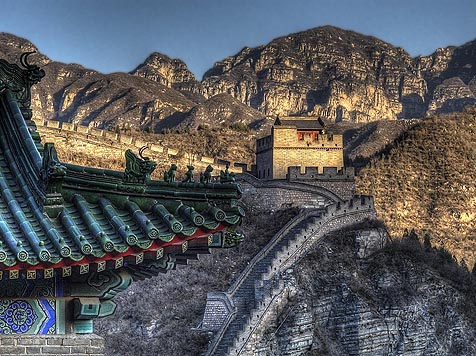Table of Contents
The Great Wall of China
The Great Wall of China is not just a wall; it’s a symbol of human determination, engineering brilliance, and a testament to the rich history of one of the world’s oldest civilizations. Stretching over 21,000 kilometers, this iconic structure is one of the most awe-inspiring landmarks on Earth. But what makes the Great Wall so fascinating? Let’s dive into its history, construction, and the secrets that make it a must-see wonder.
A Wall That Defies Time
The Great Wall of China is not a single, continuous wall but a series of walls and fortifications built over centuries. Its construction began as early as the 7th century BC and continued through various dynasties, with the most famous sections built during the Ming Dynasty (1368–1644). The wall was designed to protect China from invasions, but it also served as a means of border control, trade regulation, and a symbol of imperial power.
Engineering Marvel of the Ancient World
Building the Great Wall was no small feat. It was constructed using materials readily available in the surrounding areas, such as stone, brick, tamped earth, and wood. The wall’s design varies depending on the terrain—ranging from steep mountain ridges to vast deserts. Some sections are wide enough for five horses or ten soldiers to march side by side, while others are narrow and winding.

One of the most impressive aspects of the Great Wall is its watchtowers, which were used for surveillance, communication, and storage. These towers were strategically placed to provide a clear view of approaching enemies and to send smoke signals across long distances.
Myths and Misconceptions
Contrary to popular belief, the Great Wall of China is not visible from space with the naked eye. This myth has been debunked by astronauts and scientists alike. Another misconception is that the wall was built in one go. In reality, it was constructed over 2,000 years by different dynasties, each adding their own sections and improvements.
10 Amazing Facts About Spiders
The Human Cost
The construction of the Great Wall came at a great human cost. It’s estimated that millions of workers, including soldiers, peasants, and prisoners, were involved in its construction. Many lost their lives due to harsh working conditions, and the wall is often referred to as the “Longest Cemetery on Earth” because of the countless workers buried within its walls.
Exploring the Great Wall Today
Today, the Great Wall is one of the most visited tourist attractions in the world. Some of the most popular sections to visit include:
- Badaling – The most restored and accessible section, located near Beijing.
- Mutianyu – Known for its stunning scenery and fewer crowds.
- Jiankou – A wild and rugged section popular among adventurers.
- Jinshanling – Offers a mix of restored and original walls, perfect for hiking.
Walking along the Great Wall is like stepping back in time. The breathtaking views, the sense of history, and the sheer scale of the structure leave visitors in awe.
Why the Great Wall Captivates the World
The Great Wall of China is more than just a physical barrier; it’s a symbol of resilience, creativity, and the enduring spirit of humanity. It has inspired countless stories, poems, and legends, and continues to be a source of national pride for China.
A Journey Through History
The Great Wall of China is not just a destination; it’s an experience. Whether you’re a history buff, an adventurer, or simply someone who appreciates incredible feats of engineering, the Great Wall will leave you spellbound. So, the next time you think about the wonders of the world, remember the Great Wall—a timeless marvel that stands as a testament to human ingenuity and perseverance.


